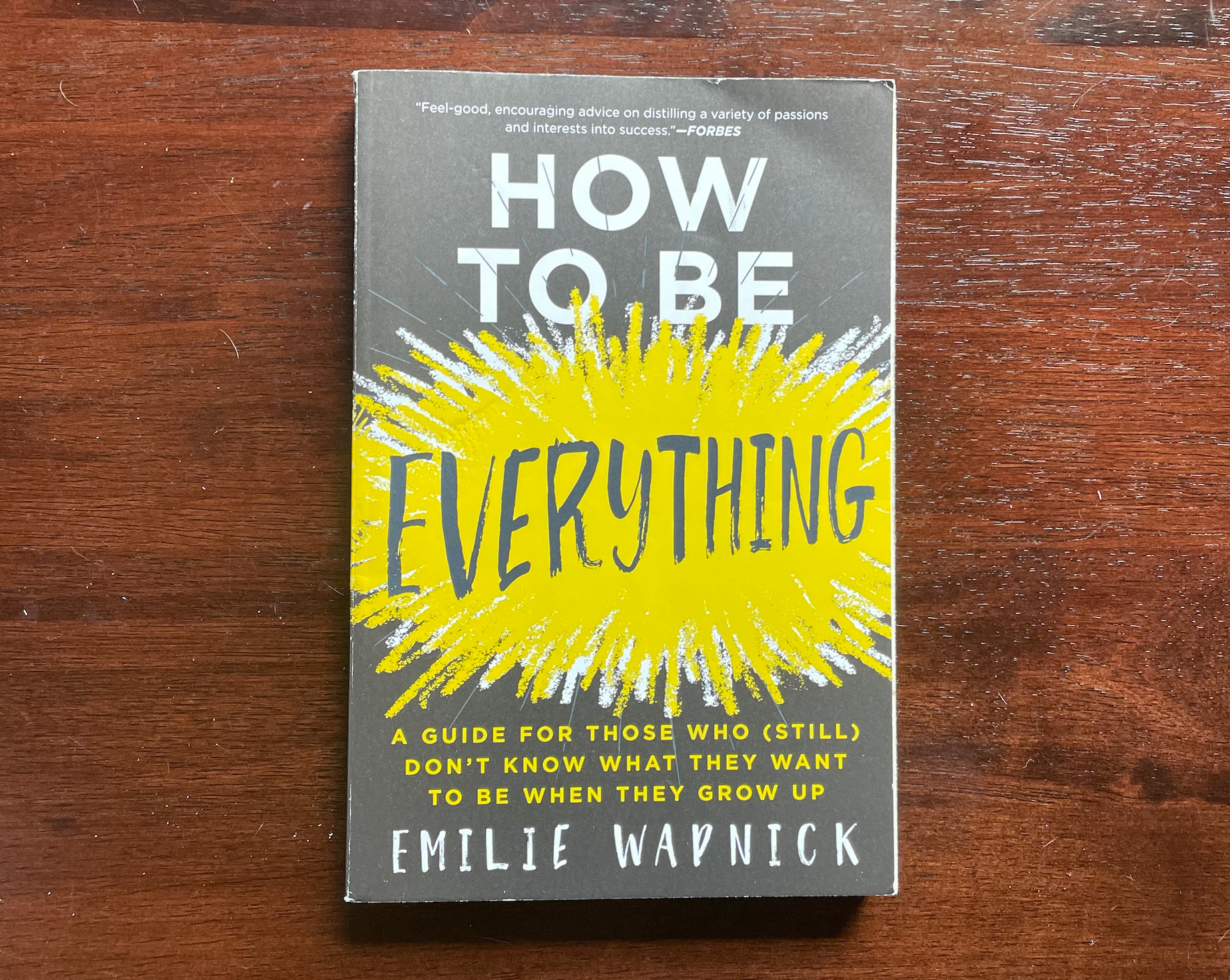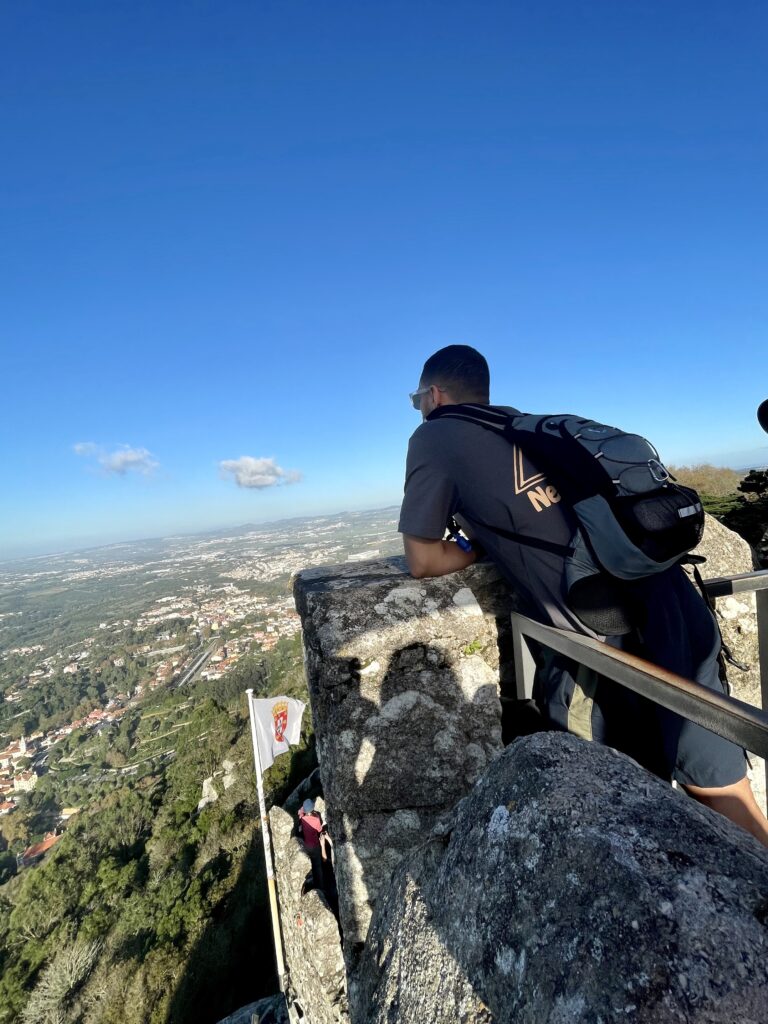To all of you who have ever questioned why you couldn’t just stick to one thing, or have wondered whether you’ll ever find “The Thing”, this book is for you!
Through engaging writing and relatable stories, Emilie Wapnick does an amazing job at explaining what the heck a multipotentialite is, and what those folks should do about their multipotentiality in a society that privileges specialization and expertise in one single field.
What is Multipotentiality?
Multipotentiality, or someone who is a multipotentialite, can be explained quite simply: it’s “someone with many interests and creative pursuits” (Wapnick, 2017, p. 8). They (we) might also be known as Polymaths or Renaissance People.
“Will I ever find my Thing? Do I even have a Thing? If my calling isn’t any of the Things I’ve tried before, will it be the next one? Will I be content in one job for more than a few years, or will each profession eventually lose its luster? If I must flit between fields in order to stay happy, will I ever amount to anything?”
— How to Be Everything (Wapnick, 2017, p. 5)
Essentially, it’s someone who strays away from just one interest or career field. While multipotentialites might approach work differently (more on this later), they all actively pursue what may seem like disparate interests.
On the surface, this may not seem like a huge deal. But, as Wapnick shows us, we all receive societal messages from young that encourage us to be just one thing. Take the question, “What do you want to be when you grow up?” as an example.
“Through social cues and conditioning, we learn to believe in the romantic notion of the One True Calling: the idea that we each have one great thing we are meant to do with our life—OUR DESTINY!”
— How To Be Everything (Wapnick, 2017, p. 7)
Why must we choose? And why must I be one thing?
This doesn’t stop as we grow older, either. As adults, we’re often asked, “What do you do?”
Try answering the question with more than one or two things, especially in completely different fields, and just imagine the looks you might get.
“Doing many things means being mediocre at all of them”
Quite early on in the book, Wapnick puts the “jack of all trades, master of none” idea to rest. She illustrates that many cultures have some form of this saying; from “the Spanish phrase Quien mucho abarca poco aprieta (He who embraces too much has a weak grasp” (Wapnick, 2017, p. 17) to the “Vietnamese saying Môt nghê cho chín, còn ho’n chín nghê (Being a master in one job is better than being average in nine jobs” (ibid).
By providing these examples, Wapnick shows us that this notion is widespread and states that it has become increasingly mainstream in recent years.
But she prompts us to question it by using simple common sense: “Does someone with decades of musical training necessarily write more beautiful (or even more profitable) songs than a musician who has been playing for just a few years? Is a seasoned high school teacher more effective than a teacher who has just a few years into their career but is brimming with enthusiasm and passion for their work? (Wapnick, 2017, p. 18)
Personally, this was so impactful. I felt like I now could finally let go of this arbitrary goal to put 10,000 hours of work into something to finally become great at it.
The Four Work Models
Central to the book is the four approaches or work models of multipotentialites: the Group Hug Approach, the Slash Approach, the Einstein Approach, and the Phoenix Approach.
Basically, these work models represent the various ways that multipotentialites live their multipotentiality.
The Group Hug Approach
The Group Hugger is the Multipotentialite who has “one multifaceted job or business that allows [them] to wear many hats and shift between several domains at work” (Wapnick, 2017, p. 63). In other words, this person does a range of things within their job or business; whether that’s editing, writing, directing, and producing as a filmmaker or blending disparate fields such as political science, education, and art within one position as a Museum Director, for instance.
What I love about this model is that you can intentionally “smoosh” interests and fields you enjoy to create something you love.
Say you like skiing, travel, and education (me!), you can create a hostel that’s centered on all things skiing, including lessons and seminars. Wapnick would call this a “renaissance business”, or “one that allows you to shift between subjects on a regular basis” (Wapnick, 2017, p. 75).
Side note: I’m definitely a Group Hugger, but I do have some “Slash” in me, too!
The Slash Approach
The Slash Approach is represented as the Multipotentialite who’s a bunch of distinct things. Think Benjamin Franklin: Author, printer, political theorist, politician, scientist, inventor, civic activist, and diplomat.
Sheesh, that’s a lot of Slashes!
This one resonated with me, as well. The fact that I can be a writer, but also a director of a museum and a sommelier, and also a tutor, sounds like so much fun. If I’m bored in one area, I can lean into another! (More on multipotentialites and boredom in a bit.)
The Einstein Approach
The Einstein Approach is pretty simple: this is someone who receives most of their earnings from one main job and who pursues other things they find a lot more interesting, on the side.
It’s named after Einstein because his job main job as a patent officer was safe and financially comfortable, but he actually produced some of his best work after his 9-5. The job simply gave him the stability to pursue his personal projects, which would ultimately change the face of science!
The Phoenix Approach
This one resonated me with the least, but I certainly see the value in it.
The Pheonix Approach is essentially doing one thing for an increased amount of time and putting your all into it, and then switching fields, careers, or disciplines—most of the time into something completely different. Think of the doctor who’s been a practicing physician for 20 years before becoming a writer, for example.
Wapnick is Empowering
What I appreciate most from the book is how empowering Wapnick is. She makes us feel like it’s okay to have our hands in different pots and encourages us to go for it without holding back.
“The truth is that you aren’t lacking a destiny or purpose. There is a very good reason for your insatiable curiosity: you’re someone who’s going to shake things up, create something novel, solve complex, multidimensional problems, and make people’s lives better in your own unique way. Whatever your destinies are, you can’t step into them while stifling your multipotentiality. You must embrace it and use it.”
— how to be everything (Wapnick, 2017, p. 16)
She even talks about all the superpowers us multipotentialites have, including our ability to synthesize disparate ideas, the rapid ways in which we learn new skills, our adaptability, how good we are at seeing the big picture, and lastly, our ability to connect and relate with a range of people and translate what we learn among them.
I can’t emphasize how impactful this was for me. I walked away from the book feeling motivated and empowered.
I also felt seen and heard, as I’ve experienced much of what she writes relating to the way people in society perceive you when you don’t fit into one, neat box.
Exercises and Activities
I’m typically not a person who likes to complete activities in books. For the most part, I like to just read whatever it is I’m reading without having to stop and write every few pages.
For this book, I made an exception.
Part of the reason for that was because there weren’t that many activities.
But the real reason why I didn’t mind the exercises and activities in this book is that they felt so practical and effective.
One of the most vivid examples of this is the “Why” exercise when she asks you a set of questions to determine the things that make you feel alive, those things that would keep you going in the face of extreme challenge and discomfort.
“Your career should be aligned with your overall goals. Your work should feel like an integrated and supportive force in your life, not the king-of-awful-thing-you-have-to-do-to-pay-the-bills.”
— how to be everything (Wapnick, 2017, p. 35)
This activity comes quite early in the book and helps you, as the reader, get in touch with what you even want your multipotentiality to look like.
Some of my “Whys”, or driving forces, were learning for my own sake, helping others learn, and helping others reach their goals.
Another exercise I found quite impactful was the one at the end of each approach, where Wapnick asks the reader specific questions to help us see what each of those models would look like in our lives, with our “Whys”.
A Note on Wapnick’s Writing
It’s apparent that Wapnick has years of blog experience.
The book is written in exactly that way, and it makes her message sound so much louder and that much more resonant.
She has this simple, yet profound way of communicating to the reader what she’s saying. It was almost like I searched some of the most obscure and personal questions I could think of on Google (I know you’ve done it, too!) and she answered them as if she was writing me a personal letter.
“Feature the things that make you unique”
— How to be everything (Wapnick, 2017, p. 200)
One of the things I appreciate most when reading any work of non-fiction is when authors get personal, and Wapnick does exactly that.
She writes about the struggles she’s faced as a Multipotentialite in a specialized world and the feelings of invisibility she’s experienced at different points in her life:
“Where it was my absolute refusal to raise my hand in class, the way I hid in my oversized skater clothes as a teenager, or my failure to mention my eclectic background to my colleagues in my twenties…”
— How to be everything (Wapnick, 2017, p. 200)
This, no doubt, makes an already-strong book, even stronger.
I didn’t know I needed this book until I read it.
Much love and thanks to Emilie Wapnick for writing it. I am eternally grateful.
As for you, reading this now, would you consider yourself a Multipotentialite?
Have you struggled with finding what to do with your multipotentiality?
In what ways will you now embrace it?
Write a comment below!
Till’ Next Time Travel Friends!
Rating: 7.5/10







